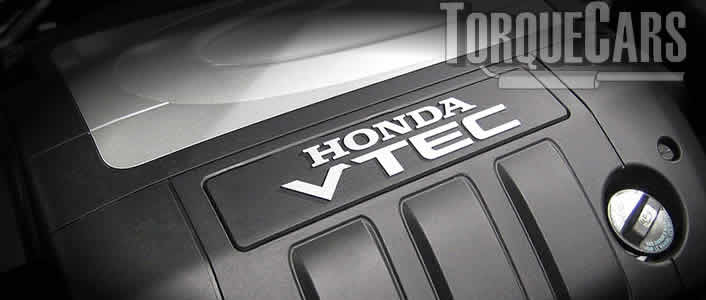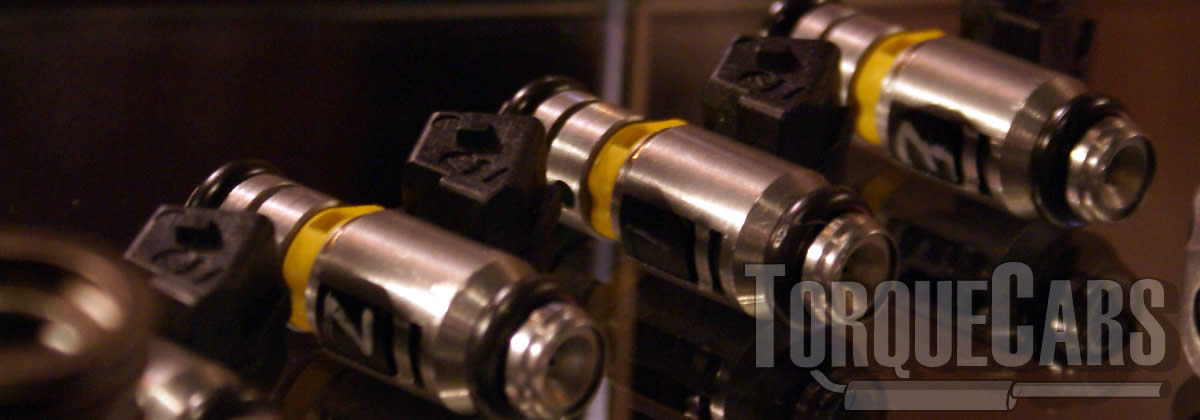Tuning the Honda J-series
"Building the best modified Honda J-series engine!"
Carref prides itself on providing the latest tips and guides to your modification project.
Our aim here is to look at J-series tuning and highlight the best modifications for your car. Honda J-series are awesome to work on and with the right modified upgrades like remaps, turbo improvements and camshafts you will certainly maximize your driving pleasure.
The J series was designed and built in the US, by Honda engineeers. It was a great V6 engine but this time designed to be transversely mounted.
Cylinders can be switched off to save fuel using the new VCM technology. A whole bank is removed from the combustion cycle providing an inline 3 engine and this actually works really well.
We rely on our visitors to pass on tips and tell us about their projects and what worked on their car, and this article is the culmination of the feedback we have received. First let us look at the history and specs of this engine and then consider which tuning modifications work best on it.
History of the Engine

- 998–2003 2.5 L J25A
- 1998–2003 J25A - Inspire, Saber
- 1997+ 3.0 L J30A
- 1997–2003 J30A1 - Odyssey, CL, Avancier, Accord
- 2003–2005 J30A4 - Accord
- 2003–2007 J30A5 - Accord, Inspire
- 2005–2007 JNA1 - Accord Hybrid
- 2013+ J30Y1 - RDX (China)
- 2017+ JNA2 - Acura MDX Sport Hybrid
- 1998–2008 3.2 L J32A
- 1998–2003 J32A1 - CL, TL, Inspire
- 2001–2003 J32A2 - CL Type-S, TL Type-S
- 2004–2008 J32A3 - TL
- 1998+ 3.5 L J35A
- 1999–2001 J35A1 - Odyssey
- 2002–2004 J35A3 - MDX, Vue (also referred to as GM L66)
- 2002–2004 J35A4 - Odyssey, Pilot
- 2005+ J35A6 - Odyssey, Pilot
- 2005+ J35A7 - Odyssey, Inspire
- 2005–2008 J35A8 - RL, TL Type-S
- 2006–2008 J35A9 - Ridgeline, Pilot (4WD)
- 2008–2014 3.5 L J35Z
- 2006–2008 J35Z1 - Pilot (front-drive)
- 2008–2012 J35Z2 - Honda Accord
- 2008–2012 J35Z3 - Honda Accord (manual transmission)
- 2009–2014 J35Z4 - Honda Pilot
- 2009–2014 J35Z5 - Ridgeline
- 2009–2014 J35Z6 - TSX V6, TL (front-drive)
- 2013+ 3.5 L Earth Dreams J-series
- 2013+ J35Y1 - Accord
- 2013+ J35Y2 - Accord
- 2014+ J35Y4 - RLX
- 2014+ J35Y5 - MDX
- 2015+ J35Y6 - TLX, Ridgeline (2017+)
- 2007–2014 3.7 L J37
- 2007–2013 J37A1 - MDX
- 2009–2012 J37A2 - RL
- 2007–2014 J37A4 - TL (AWD)
- 2010–2013 J37A5 - ZDX
Tuning the Honda J-series and best J-series performance parts.
What are the most effective J-series parts
The ultimate J-series tuning parts on an engine are sensibly the ones that give the best power gain for you spend.
We won't be swayed by popular J-series tuning parts, they need to be cost effective.
Altering your J-series camshaft will make a dramatic difference to the engine torque. Choosing a higher performance camshaft profile raises the torque accordingly.

Fast road camshafts usually bump the bhp across the rev range, you may lose a little bottom end bhp but your top end will be higher.
Race camshafts, bump the top end band but as a result the car will not idle smoothly and low end power nearly always suffers.
For a car driven daily should ideally to match your engines power to your typical driving style.
I'd be surprised if you have ever thought a J-series Race cam is a pleasure to live with when in heavy traffic.

Different J-series engines respond better to extreme camshaft durations than others.
The ECU mapping and injectors and fuel pump also have a large bearing on the torque gains you'll get.
A longer valve duration can alter the torque band and on most engines the exhaust and intake durations do not need to match, although most cams and tuners use matched pairs there are some advantages to extending the intake or exhaust durations.
Please watch our introduction Video tutorial to car tuning. Be sure to subscribe and support our new channel.
How to tune your car
- Improve the handling
Focus on Suspension improvements, such as coilovers and make sure the bushings are in good order and that the alignment is correct. Then focus on improving the brakes, with a big disk brake conversion kit and fast road brake pads.
- Remove restrictions
Focus on the intake and exhaust with filters being the common point of restriction in a tuned car. Intercoolers may also become restrictive on turbo engines so this may also need to be uprated.
- Burn more fuel & air
Increase the fuelling so it matches the air coming into the engine. The ratio is important so you need to improve the fuel pump and injectors, so the head mods, big valve conversions, fast road camshafts and forced induction upgrades extra supply of air is adequately met.
- Test and replace any weak parts
Weak areas are commonly the clutch, the turbocharger and pistons and crankshaft in a highly tuned engine. Makes sure these components will cope with your power aspirations.
- The Tune or Remap
A cars ECU controls the fuel, timing, spark and even the turbo in some cases, so to fully extract your gains you should remap the car last and this will fully release the power. Some cars are easy to map, and others require piggyback ECU's or aftermarket ECU's but this is the most vital step of your tuning project.
Modifying to Stage 1:
Intake headers, Drilled & smoothed airbox, Remaps/piggy back ECU, Sports exhaust manifold, Fast road camshaft, Panel air filters.
Modifying to Stage 2:
Sports catalyst & performance exhaust, Ported and polished head, fuel pump upgrades, induction kit, high flow fuel injectors, Fast road cam.
Modifying to Stage 3:
Internal engine upgrades (head flowing porting/bigger valves), Crank and Piston upgrades to alter compression, Competition cam, Twin charging conversions, Adding or Upgrading forced induction (turbo/supercharger), Engine balancing & blueprinting.
A remap should help to fully realize the full potential of all the upgrades you've done to your J-series.
It will usually give around 30% more power on turbocharged vehicles and you can expect to see around 15% on NASP engines, but figures achieved may vary depending on the upgrades you've carried out and the condition of your engine.
Getting air into your J-series is vital to any performance tuning project.
Headers flow the air from the filter and allow it to be fed into the engine cylinders with fuel for the squish phase.
Structure and flow characteristics of the Headers can make a large improvement to fuel delivery on the J-series.
Commonly we find the intake headers are improved through performance upgrades, although some manufacturers provide fairly well optimized intake headers.
Fitting big valve kits, doing some J-series port enlargement and head flowing will also boost power, and as an added benefit will give you increasing the power increase on other mods.
Which turbo upgrades are best?

NASP engines need quite a lot of work when you add a turbo, so we have a separate guide to help you take into account the pros and cons of going this route on your J-series
The more air you can get into an engine, the more fuel it can burn and uprating the induction with a turbocharger upgrade makes major power gains.
When an engine has a turbocharger mods are going to net you a larger power gain and we find turbo engines already contain stronger components.
There are common areas of failure for every engine, with some being very over engineered and some just sufficiently able to handle stock power
Discover these limitations and fit higher quality crank and pistons to survive the power.
We've seen guys spending a loads on turbocharger upgrades on the J-series only to watch the engine explode soon after it's used on the roads.
Larger upgraded turbos tend to suffer a bottom end lag, and little turbos spool up much more quickly but won't have the peak rpm power band gains.
In recent times the range of turbo units is always moving on and we now see variable vane turbo units, permitting the vane profile is altered according to speed to lower lag and increase top end bhp and torque.
Twin scroll turbo units divert the exhaust gases into a couple of channels and direct these at differently designed vanes in the turbocharger. They also boost the scavenging effect of the engine.
It is common that there is a limitation in the air flow sensor AFM/MAF on these engines when considerably more air is being drawn into the engine.
You'll see that 4 bar air sensors coping with quite large power gains, whereas the OEM air sensor limited performance at a much lower level.
Adding a supercharger or additional turbo will make large torque gains, although more challenging to get working. We have this article on twincharging if you want to read more.
Fuelling
Don't omit to boost the fuel system when you are increasing the power - it makes the car more thirsty.  We would recommend you to be generous with your injectors flow rate.
We would recommend you to be generous with your injectors flow rate.
As a rule of thumb add 20% when fitting an injector, helps cope with injector deterioration and gives a bit of spare capacity should the engine require more fuel.
We think this one is common sense, but you'll need to match your fuel injector to the type of fuel your car uses as well.
Choosing the right performance exhaust
One of the most common mistakes and problems we see in tuning projects is usually down to the exhaust, or rather a poorly chosen exhaust for your engine.
Only look to improve your exhaust if your exhaust is actually causing a restriction.
On most factory exhausts you'll find your flow rate is ok even on modest power gains, but when you start pushing up the power levels you will need to get a better flowing exhaust.
Note that with the largest exhaust you can find you'll reduce the exhaust flow rate - the best for power gains are usually between 1.5 to 2.5 inches. It is the shape and material more than the bore size.
Typically exhaust restrictions come around the catalysts installed, so adding a better flowing sports alternative will help avoid this restriction.
Weak spots Issues & problem areas on the
The engines are generally reliable and solid as long as they are regularly serviced and maintained.
Regular oil changes are vital on the , especially when tuned and will help extend the life and reliability of the engine.
For more information on Tuning your engine please join us in our friendly forum where you can discuss tuning options in more detail with our owners. It would also be worth reading our unbiased tuning articles to get a full grasp of the benefits and drawbacks of each modification.
Please help us improve these tips by sending us your feedback in the comments box below.
We love to hear what our visitors have got up to and which upgrades work best for them on each model of car. Comments are used to improve the accuracy of these articles which are continually updated.
If you liked this page please share it with your friends, drop a link to it in your favourite forum or use the bookmarking options to save it to your social media profile.
Check out TorqueCars new YouTube channel, and see their awesome new content...
Feedback
Please use our forums if you wish to ask a tuning question, and please note we do not sell parts or services, we are just an online magazine.
Help us improve, leave a suggestion or tip
